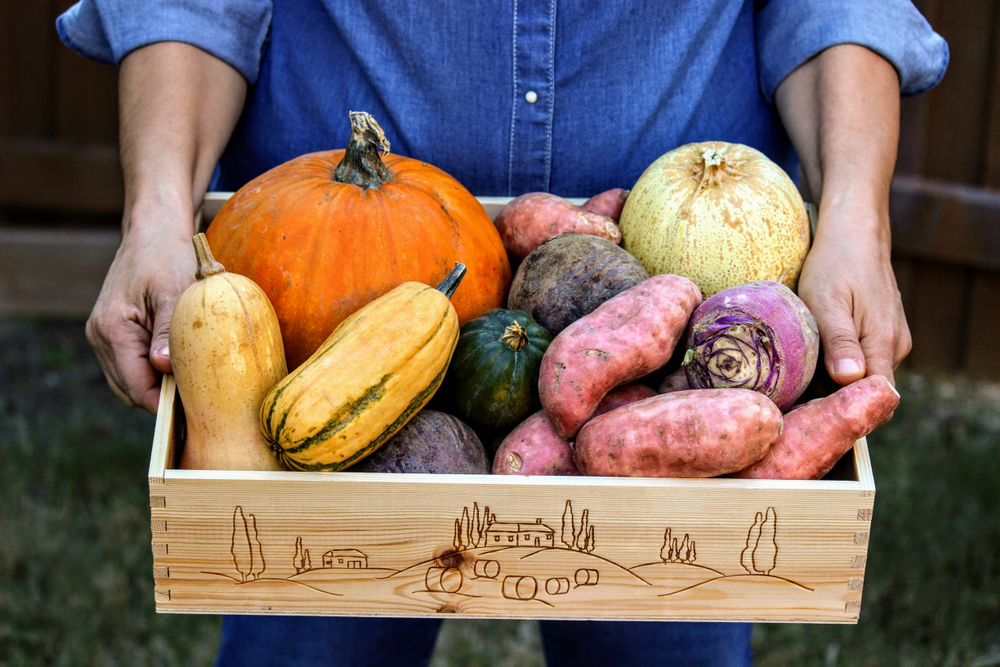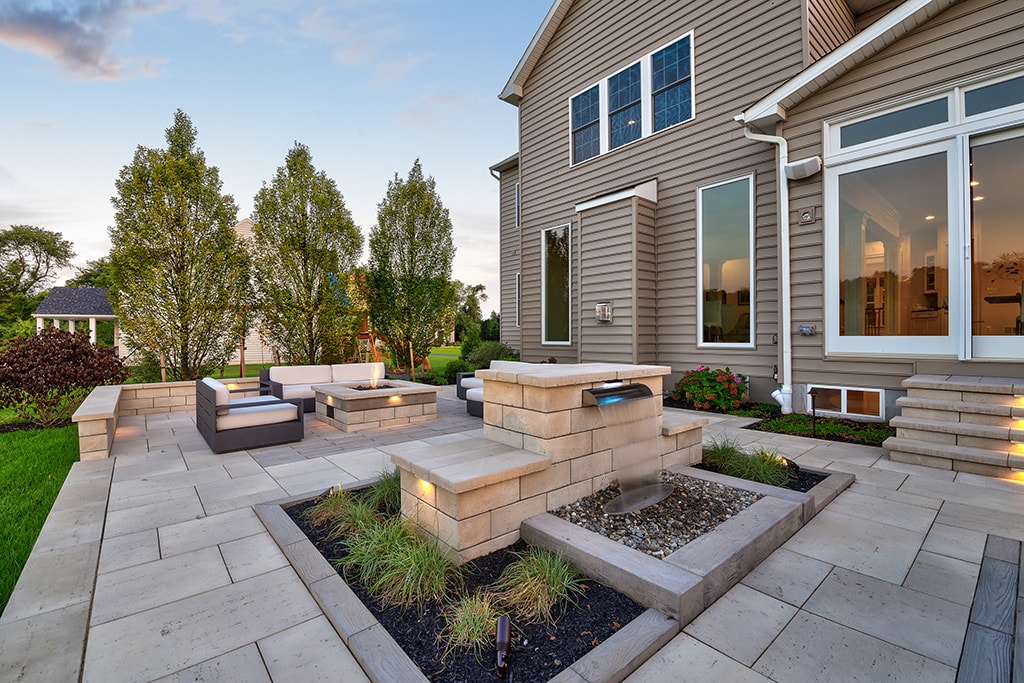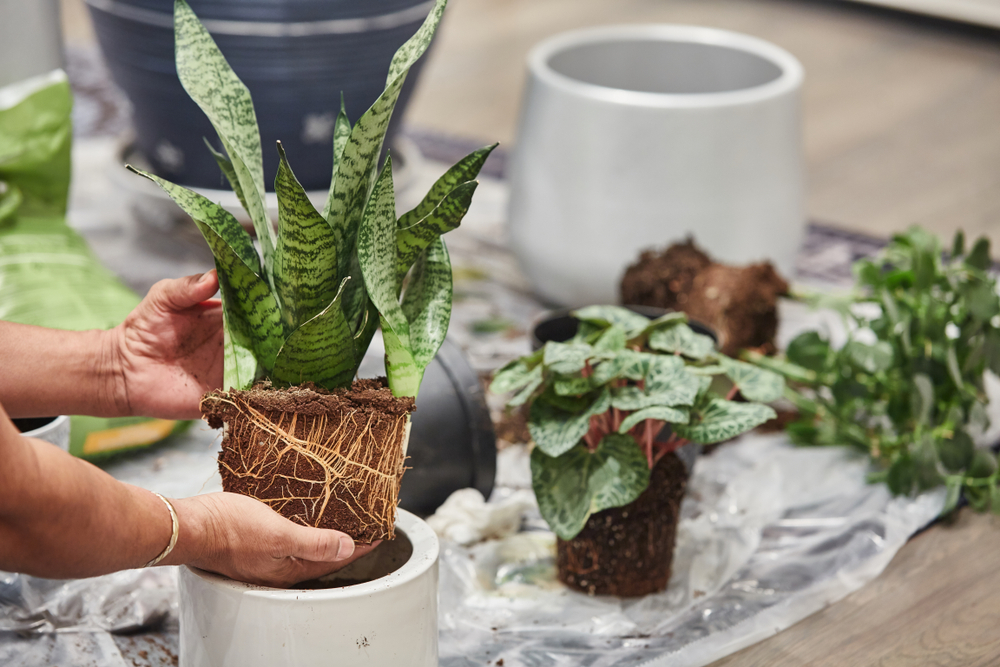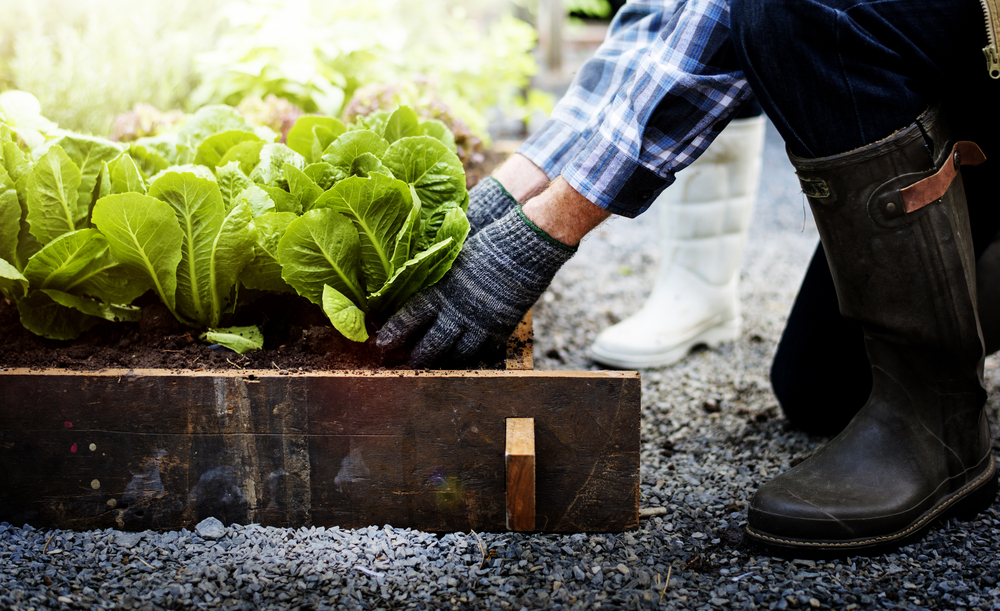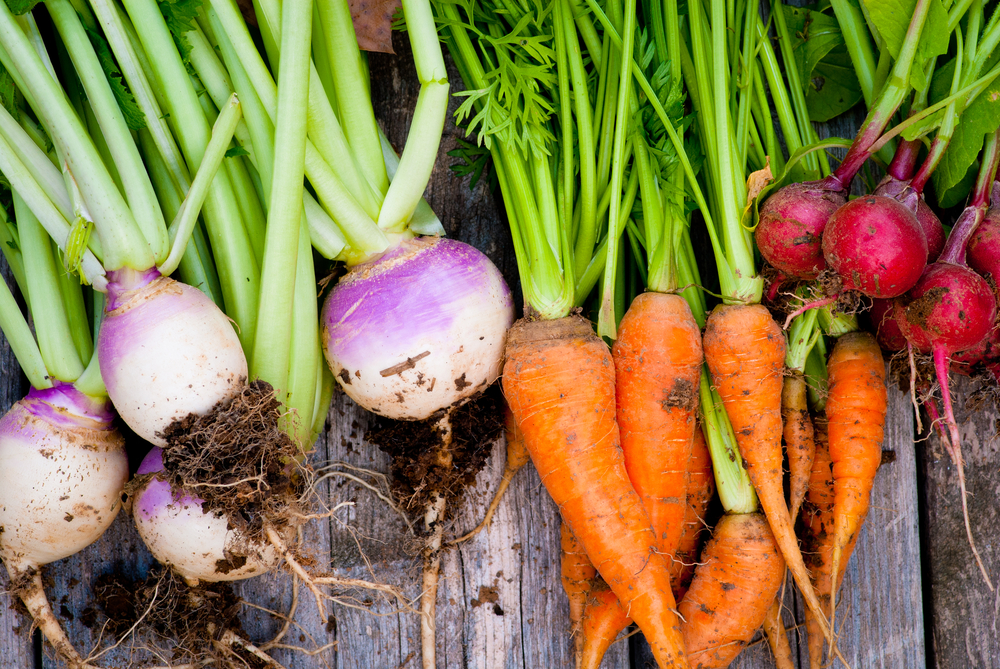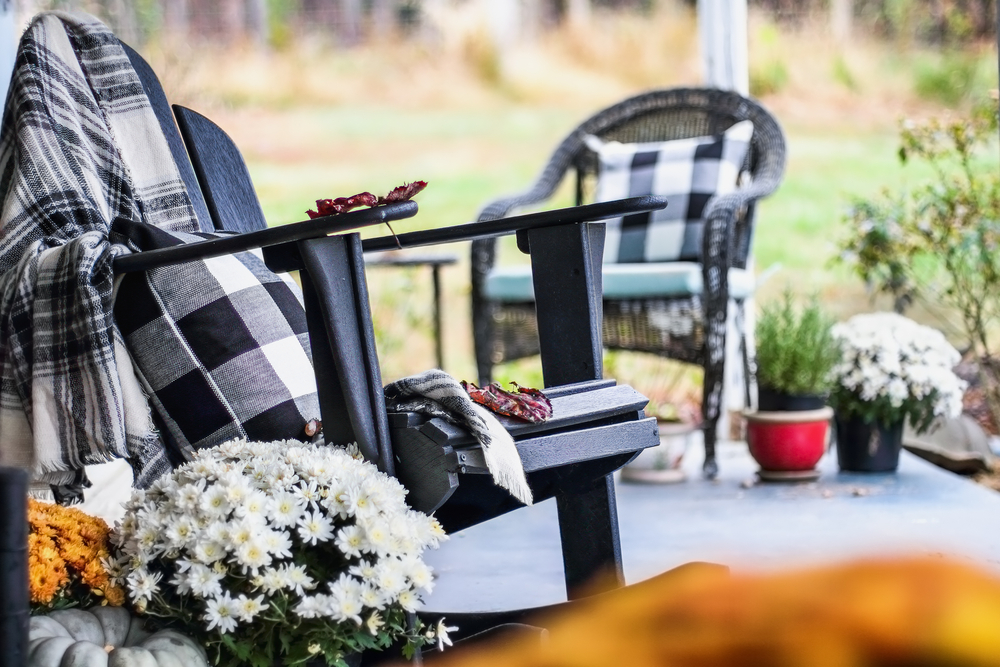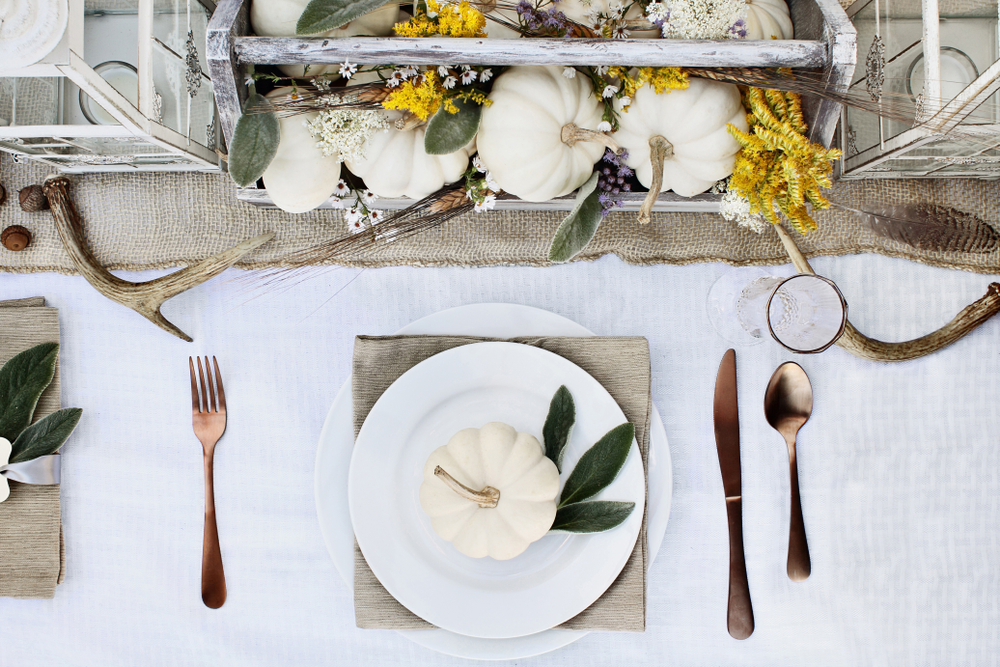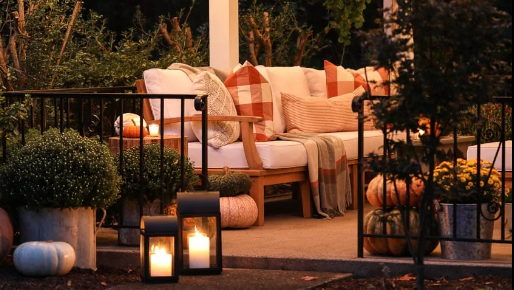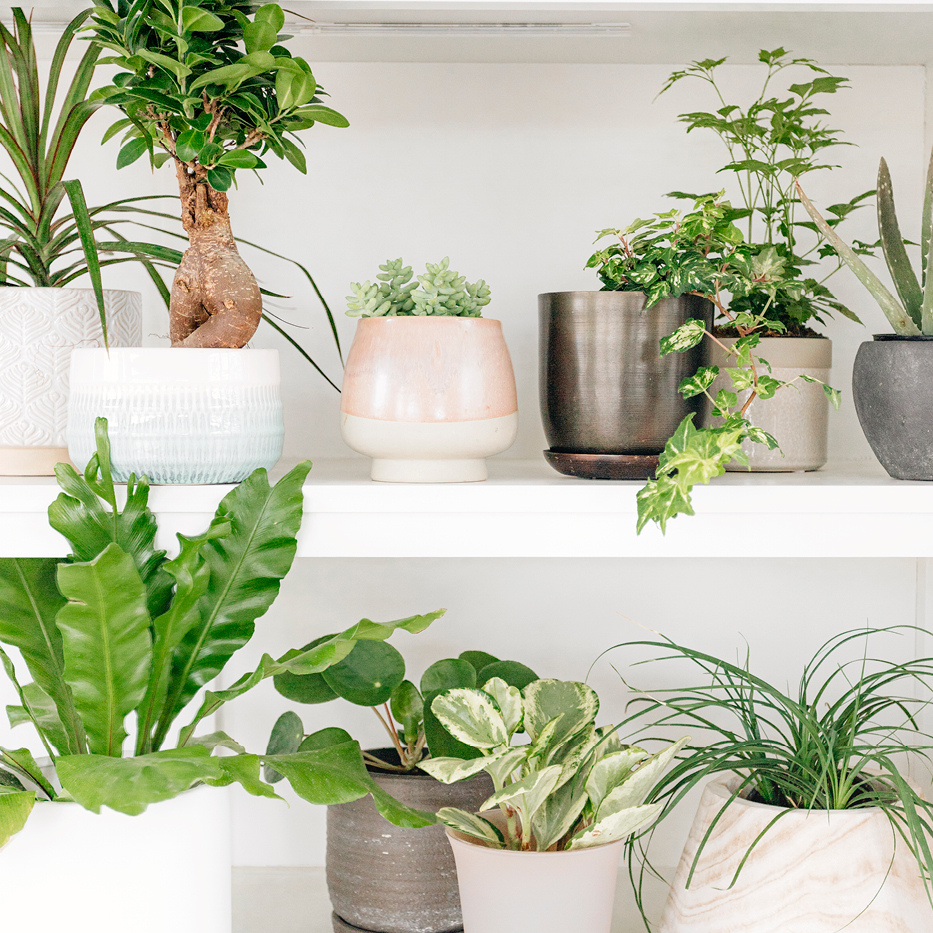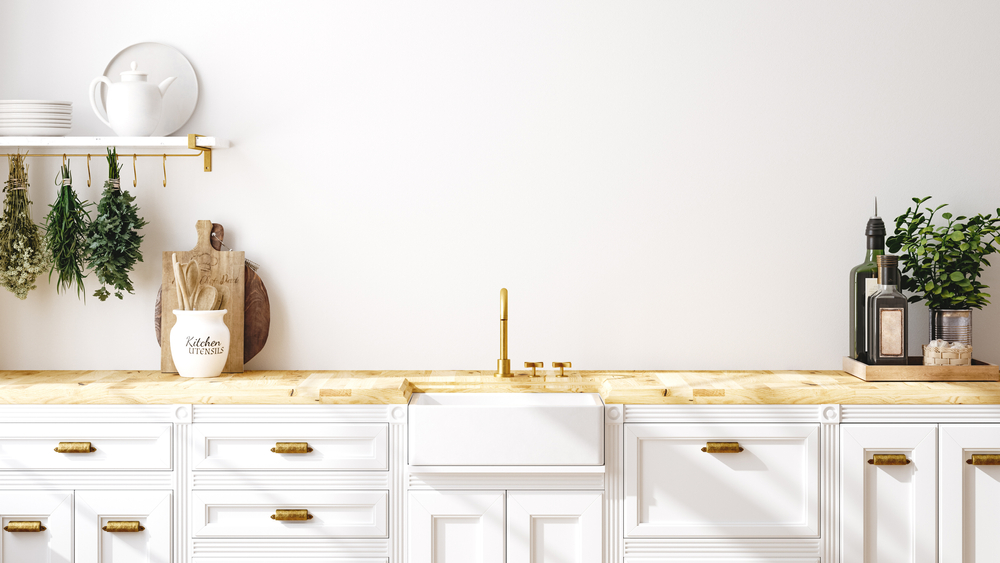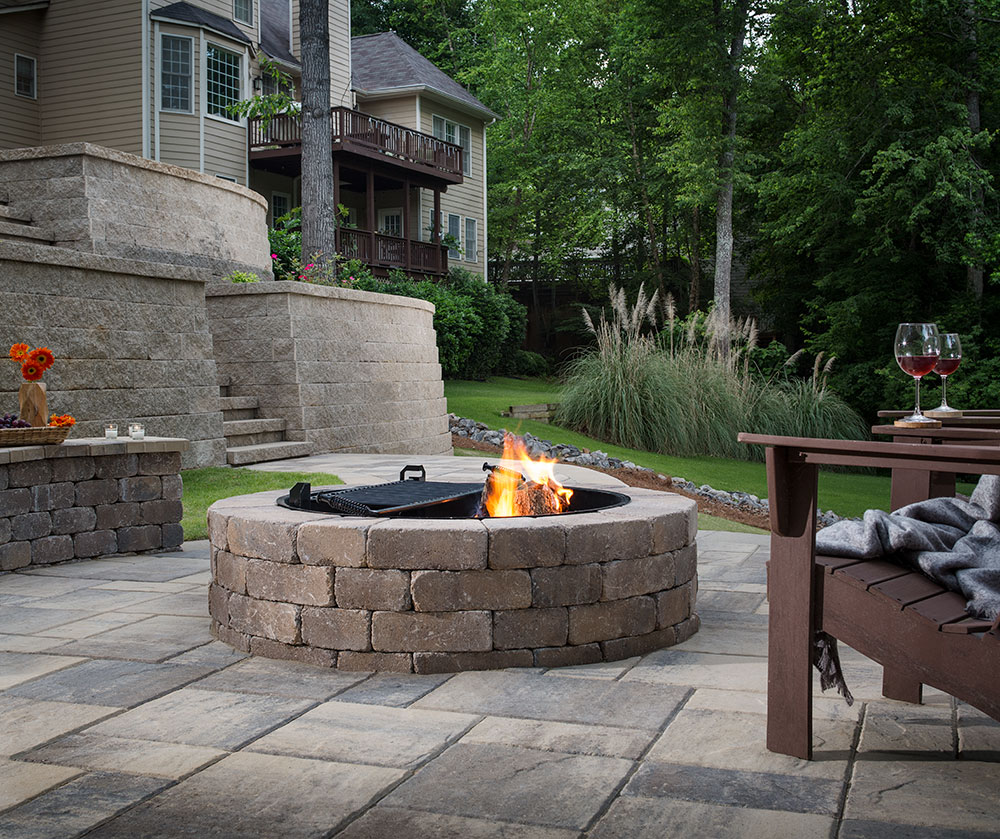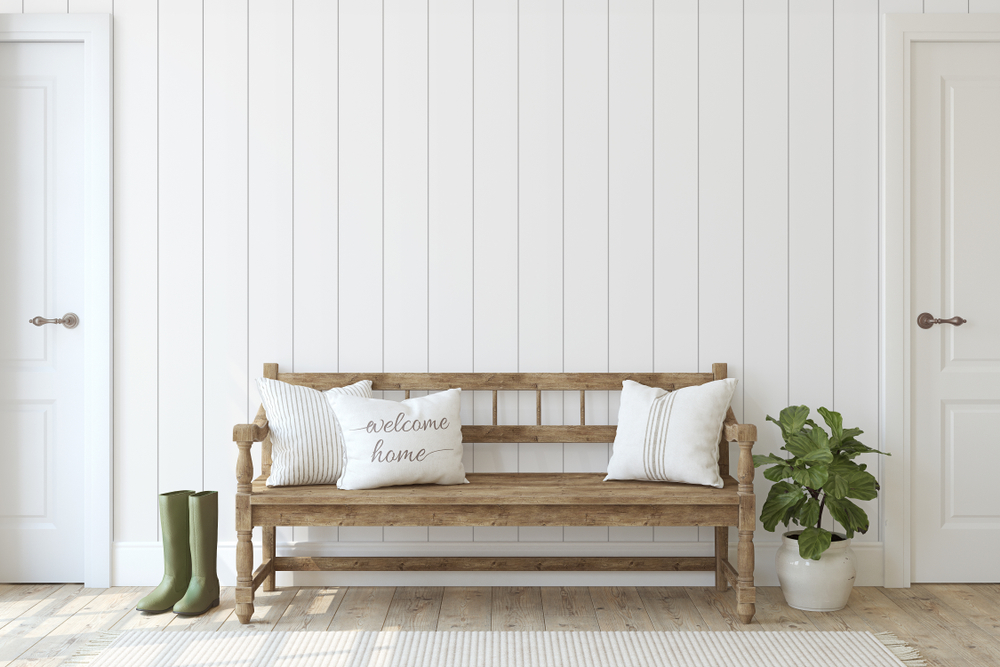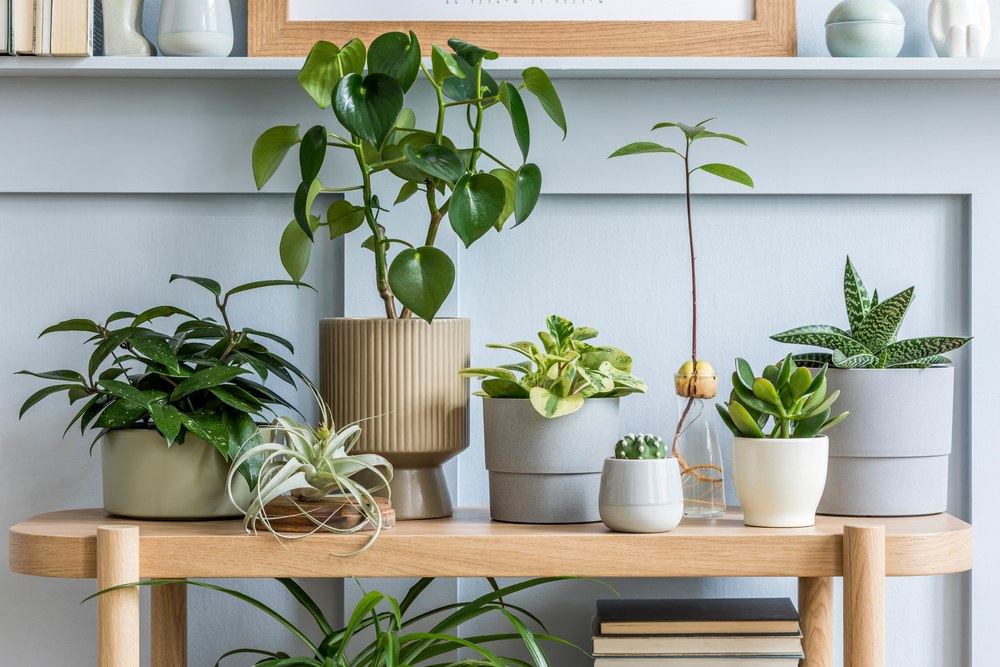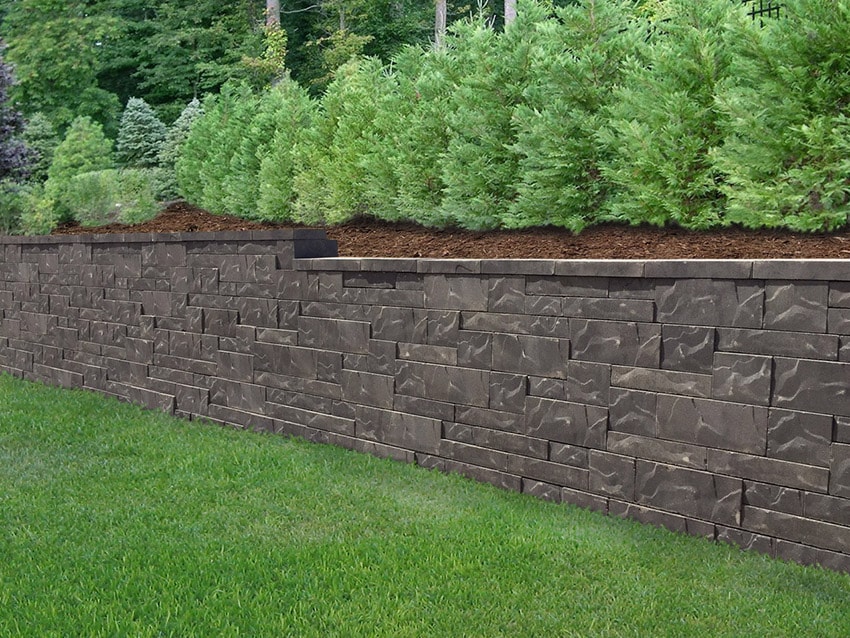Author: escranton@proechosolutions.com
Creating a Stunning Outdoor Entertaining Area with Techo-Bloc
In today's fast-paced world, our outdoor spaces have become essential sanctuaries for relaxation, enjoyment, and entertainment. A well-designed outdoor entertaining area can transform your backyard into a welcoming haven where you can host gatherings, spend quality time with loved ones, and create cherished memories. One of the best ways to achieve this is by incorporating Techo-Bloc, a leading provider of high-quality hardscaping products, into your outdoor design.
-
The Beauty of Techo-Bloc Products
-
Pavers and Slabs for a Stunning Patio
-
Create Inviting Seating Areas
-
Outdoor Kitchen and Dining
-
Softscape Integration
Designing a beautiful outdoor entertaining area with Techo-Bloc offers endless possibilities. From stunning patios and inviting seating areas to functional kitchens and fire pits, Techo-Bloc's premium hardscaping products can elevate your outdoor space and transform it into a captivating haven for entertaining. Embrace your creativity, combine different textures and colors, and let Techo-Bloc “pave” the way to your dream outdoor entertaining area. Get ready to host unforgettable gatherings, create lasting memories, and enjoy the beauty of the great outdoors right in your own backyard!
10 Low-Maintenance Indoor Plants for Summer
Summer is the perfect time to bring nature indoors and enjoy the beauty of plants without the hassle of high maintenance. If you're looking to add some greenery to your home but don't have a green thumb or the time to care for demanding plants, fear not! We have compiled a list of 10 low-maintenance indoor plants that are perfect for the summer season. These plants are not only easy to care for but also thrive in the warm weather, bringing a refreshing touch to your living spaces.
Snake Plant (Sansevieria)
Snake plants are well-known for their ability to survive in almost any condition. They require minimal water and can withstand high temperatures, making them ideal for the summer months. With their striking vertical leaves, snake plants add a touch of elegance to any room.ZZ Plant (Zamioculcas zamiifolia)
The ZZ plant is a tough, drought-tolerant plant that can handle neglect. It has attractive glossy leaves and thrives in both bright and low light conditions. The ZZ plant's ability to store water in its rhizomes makes it a perfect choice for summer vacations when regular watering might not be possible.Pothos (Epipremnum aureum)
Pothos is an excellent choice for beginners and busy individuals. It is a vine that can be grown in hanging baskets or placed on shelves. Pothos plants can adapt to various light conditions, including low light, and they only require watering when the soil feels dry to the touch.Spider Plant (Chlorophytum comosum)
Spider plants are popular for their air-purifying qualities and resilience. They thrive in bright, indirect light and can tolerate some neglect. Spider plants produce small offshoots called "spiderettes," which can be propagated to create new plants, making them a great option for plant enthusiasts.Aloe Vera (Aloe barbadensis)
Aloe vera is not only a popular medicinal plant but also a low-maintenance indoor beauty. It loves bright, indirect sunlight and requires minimal watering. Aloe vera's gel-filled leaves provide a soothing and cooling effect, making it a perfect addition to your summer oasis.Jade Plant (Crassula ovata)
Jade plants are known for their thick, succulent leaves and their ability to survive in arid conditions. They prefer bright light and infrequent watering. The jade plant's unique appearance adds a touch of sophistication to any space.Peace Lily (Spathiphyllum)
Peace lilies are elegant plants that thrive in low light conditions, making them suitable for rooms with limited natural light. They have attractive glossy leaves and produce beautiful white flowers. Peace lilies indicate when they need watering by drooping their leaves, making it easy to know when to give them a drink.Cast Iron Plant (Aspidistra elatior)
True to its name, the cast iron plant is nearly indestructible. It can tolerate low light, low humidity, and irregular watering. With its broad, dark green leaves, this plant adds a touch of the tropics to any room.Chinese Evergreen (Aglaonema)
Chinese evergreens are popular for their beautiful variegated leaves and ability to thrive in various light conditions. They are low-maintenance plants that require infrequent watering. Chinese evergreens are available in a range of colors, adding a vibrant touch to your living space.Ponytail Palm (Beaucarnea recurvata)
The ponytail palm is a unique-looking plant with a swollen trunk and long, draping leaves. Despite its name and palm-like appearance, the ponytail palm is not a true “palm.” In fact, it is more closely related to desert plants in the Agave and Yucca genera (such as Joshua trees). The ponytail palm is drought tolerant, slow-growing, and requires very little care. This plant is ideal for people with very little time or who travel regularly. The Ponytail Palm will be perfectly happy being watered every couple of weeks and left alone to soak up the sunlight.Bringing the beauty of nature indoors during the summer doesn't have to be a daunting task. With the selection of low-maintenance indoor plants mentioned above, you can effortlessly create a lush and refreshing environment without spending hours on plant care. From the resilient snake plant to the elegant peace lily, these plants thrive in warm weather and require minimal attention, making them perfect companions for busy individuals or those with less experience in gardening. So, go ahead and add these low-maintenance indoor plants to your summer decor, and enjoy the soothing presence of greenery throughout the season without the stress of high maintenance. Let nature take center stage in your home while you sit back, relax, and revel in the serenity that these plants bring.
Common Mistakes To Avoid When Growing Vegetables
Growing your own vegetables is a delightful way to get back to nature and enhance your table, but vegetable gardening mistakes can damage the experience. Luckily, these mistakes are easy to avoid if you plan ahead and do some basic research.
Not Starting Slow
Trying to grow everything all at once is a recipe for frustration. Especially if this is your first attempt, be realistic about how much time and effort you’ll be able to devote to your garden and choose vegetables that won’t require more than you have to give. Baby lettuce is a great first step, especially if your containers are on the smaller side. Other beginner-friendly options include peas, radishes, and Swiss chard.Not Considering Your Weather
Your area’s climate partly determines the types of vegetables that will flourish in your garden. Vegetables such as sweet potatoes, peppers, and zucchini tend to grow best in hot weather, while spinach, carrots, and beets prefer chillier conditions. You’ll also need to find your area’s frost-free date, which determines when you should plant different vegetables. The maps on the back of seed packets are a good start, but you’ll need to investigate local weather patterns as well. Another of the more common vegetable gardening mistakes is choosing plants that require more or less sunlight than your garden receives. Take note of how many hours of light your space gets each day and whether it’s primarily morning or afternoon sun; then, choose plants suited to your conditions.Not Considering Your Space
How much space do you have for a garden, and what does that space consist of? Plenty of vegetables thrive in containers, so don’t despair if your space is mostly paved. Do, however, research different varieties to make sure your choices won’t outgrow their homes. For in-ground beds, take exact measurements and plan ahead to ensure none of your plants will crowd out their neighbors. Remember to look beyond the soil surface; tomato plants can grow to amazing heights even in containers, and mint will quickly take over a bed and potentially your entire yard if you don’t set physical barriers deep into the ground.Not Having the Proper Equipment
While most home gardens don’t require tons of equipment, some tools are essential for avoiding vegetable gardening mistakes. A garden hose or watering can tops the list; even in rainy climates, you can’t always depend on the weather to keep your plants healthy. You’ll also need good soil; plan to refresh it at least once a year. A spade or digging fork, comfortable gloves, and garden shears are simple but necessary items. Some vegetables also require specialized equipment, such as tomato cages or bean trellises.Not Having a Plan for Pests
You’re not the only one eager to snack on your homegrown bounty; a whole array of pests from aphids to slugs to voles can damage your vegetables. Learn which pests you’re most likely to encounter in your area and look for the safest and most eco-friendly means of preventing them. Be especially careful with commercial pesticides as many of them can harm beneficial insects that naturally prey on the unwanted bugs eating your plants.Not Having a Plan for Weeds
Like pests, weeds are an inevitable reality that can lead to vegetable gardening mistakes. Keep a sharp eye on your beds and pull weeds immediately; experiment with different tools and techniques to see what works best for you. If you decide to use herbicide, make certain the product you choose is safe for edible plants. Growing your own vegetables is a fun and delicious hobby, and a little preparation goes a long way. Be sure to explore Red's Home & Garden for advice, inspiration, and all of your gardening needs.Starting Your Own Vegetable Garden: A Step-by-Step Guide
There is something very satisfying about growing your own vegetables. Picking ripe tomatoes for a salad or steaming fresh broccoli from your garden not only gives you fantastic-tasting food but provides a sense of accomplishment from consuming something you took time and care to cultivate. If you are new to the experience, you can assemble a thriving garden quickly. All you need is a little knowledge, and here are the steps to get you started.
Select a Spot for Your Garden
There are only a few requirements when choosing an ideal location for your garden. The primary goal is to pick a location with full sun where all the plants can have optimal growing conditions. It is also essential to have convenient access so that you can give your garden the regular attention it needs. Additionally, try to choose a spot that is level. It will make the garden easier to maintain and allow you to create a healthy environment for growing vegetables.Plan Your Layout
The design you choose for your garden is as important as the location. The layout should be designed for both aesthetics and functionality. The primary concern is creating optimal conditions for the vegetables you grow. A simple and casual garden can have wide rows that make fertilizing, watering and harvesting a snap. If you plan on growing a more significant crop, reduce the spacing between rows to allow full use of the area.Decide What To Grow
Deciding what you want to grow is a satisfying aspect of creating your new garden. You may be inclined to try to grow every vegetable you love, but limiting what you cultivate is essential. Select veggies that are challenging to purchase or concentrate on your favorites. For instance, if you are a tomato lover, expand with multiple varieties. This will ensure you are getting the most personal reward for your efforts.Choose Seeds or Seedlings
When in the first stages of making a garden, know that using seeds for each plant you grow is only sometimes necessary. Although you may have particular hopes about what you choose to grow, starting your garden solely from seeds can take time and effort. Instead of nurturing tiny plants indoors until they are ready to cultivate outside, you can easily visit a garden center and select young plants already ready to incorporate into your garden.Pick the Right Soil
A soil rich in nutrients and full of life is ideal for your garden to give the plants you are growing the energy they need to thrive. Inspect the earth and identify its characteristics. Check to see if it is dense, gritty, or dry. You may need to augment it by incorporating organic matter to ensure you provide a healthy environment for your vegetables. The ideal soil should have a rich, dark, moist and crumbly texture.Prepare for Pests
Of course, you knew this would be a subject to address. Controlling pests is part of the package when you have a garden, but it does not need to be daunting. The last thing you want to do is spray your beautiful vegetables with pesticides. Instead, there are natural methods you can use to help mitigate pests. The first step is to control the weeds. Keep them in check by adding clean straw or mulch around larger plants. Keep pets and other animals out of your garden. Consult your local garden center for pertinent information about dealing with local insects and wildlife.Get Inspiration to Start Your Amazing Garden Today!
Now that you have a plentiful bounty outside your door, you may be unable to consume everything. Freeze or can some veggies for winter and have fun sharing your efforts with people you know with a fresh basket or casserole. At Red's Home and Garden, we have all the supplies to inspire you and make your garden dreams come true. Contact us today to get in touch with our team of professionals to help you achieve your vision. Grab some tools and get started!DIY Projects to Get Your Outdoor Living Space Ready for Spring
Spring is just around the corner, and it's the perfect time to start planning and preparing your outdoor living space for the warmer weather. Whether you have a spacious backyard or a cozy balcony, there are plenty of DIY projects you can tackle to create a beautiful and functional outdoor oasis. From building a fire pit to planting a garden, these projects can help you maximize your outdoor living space and make the most of the spring and summer months. In this article, we'll share 10 DIY projects to get your outdoor living space ready for spring, along with step-by-step instructions and helpful tips to guide you through the process. So grab your tools, roll up your sleeves, and let's get started!
- Create an outdoor lounge area: Create a cozy and comfortable outdoor lounge area by adding some comfortable seating, a coffee table, and some outdoor rugs. This is a perfect spot to relax, entertain guests, or simply enjoy some fresh air. Spring pillows and potted flowers will finish off the area!
- Fire pit or grill: Build a fire pit or grill for a fun and functional addition to your outdoor living space. You can choose from a variety of materials and designs, depending on your taste and budget like our Techo Bloc stones and pavers! Fire pits are perfect for gathering around with friends and family on chilly evenings, while a grill lets you cook up your favorite meals in the great outdoors.
- Mood lighting: Add some lighting to your outdoor living space to create a warm and inviting ambiance. You can use string lights, lanterns, or even solar-powered lights to illuminate your space. Our Vista Landscape Lighting also adds ambience to your deck, landscape or around the pool.
- Build raised garden beds: Plant a flower or vegetable garden to add some natural beauty to your outdoor space. Whether you have a green thumb or you're just starting out, there are plenty of easy and rewarding projects to choose from. Raised beds can keep your flower, vegetable or herb garden safe from animals, excess moisture and accidental trampling by the kiddos! Subscribe to our email list and receive our FREE ebook “How To Start A Vegetable Garden”!
- Outdoor movie screen: Grab an old white sheet, some rope and clothespins and voila! You’ve got a super easy outdoor DIY project the whole family can enjoy. Get ready to break out the movie projector and some popcorn!
- DIY planter table: Transform a wooden table into a multipurpose outdoor planter with paint, a jigsaw and a plastic planter. The herb garden, which doubles as a live centerpiece, adds a touch of whimsy to the conversation area.
- Repurpose an old cabinet into a mini bar: An old cabinet can function as a mini bar with just a little help. Not only will it look great, but it also functions as extra storage space, too! To get started, apply a fresh coat of paint on the cabinet and add some racks to store glasses. Then, decorate it to match your patio. The old cabinet will easily become a food and drink station you can enjoy for three seasons out of the year (sorry winter).
- Create a kid-friendly zone: If you have kids of your own or frequently entertain friends or family who do, an outdoor kid-friendly zone is the perfect DIY backyard project. It's also an excellent opportunity to let the kids get involved. A playhouse, a swing set, or a sandbox are just a few great ideas!
- Create a bird sanctuary: Build a DIY birdhouse or a birdfeeder and add one of our beautiful birdbaths. Once you finish your bird sanctuary, add a bench nearby so you can sit and watch your hard work pay off.
- Repurpose old items: Decorating your home and yard can be as simple as repurposing old items, such as:
- Tin cans: Tin cans make excellent planters, votives, and outdoor storage containers. You can even paint an old tin can and use it as your silverware or condiment holder at your outdoor bar or kitchen.
- Tires: Instead of tossing worn tires, repurpose them. Tire swings are one front yard staple that never goes out of style. Or, you can paint your tire a fun color and use it as a unique planter in your garden.
- Furniture: Old dressers, nightstands, and wooden chairs can be upcycled into planters or bee houses.
- Glass jars: Repurposed glass jars have become trendy in recent years, largely due to their versatility. Use glass jars as glassware at your outdoor bar, like candle holders or as small planters.
- Pallets: Wooden shipping pallets are another popular repurposing item because they can be transformed into almost anything, including outdoor furniture, fencing, storage walls, planters, and sandboxes.
Tips and Tricks:
Here are some helpful tips and tricks to keep in mind when working on your DIY projects:- Start small: If you're new to DIY projects, start with a smaller project and work your way up. This will help you build your confidence and skills.
- Use reclaimed materials: Reclaimed materials, such as pallets and old bricks, can be an affordable and eco-friendly way to complete your project.
- Don't be afraid to personalize: Add your own personal touches to each project to make it unique and fitting to your style.
- Ask for help: Don't hesitate to ask a friend or your kids to help you with your project. Working together can be more fun and can help you complete your project faster.
10 Indoor Plants to Boost Your Mood in the Cold Weather
Cold winter weather can make us feel down and out, but incorporating some greenery into our indoor spaces can help boost our moods and bring a touch of nature into our homes. Indoor plants not only improve air quality and add aesthetic appeal, but they can also positively impact our mental health. Here are ten indoor plants that can help improve your mood during the cold winter.
Snake Plant (Sansevieria)
Snake plants are known for their air-purifying abilities and are also believed to reduce stress and anxiety. The Snake Plant, also known as Sansevieria, is an extremely versatile and low-maintenance indoor plant. Not only is it known for its air-purifying abilities and helping to remove toxins from the air, but it also thrives in a wide range of light conditions, from low light to bright indirect light, which makes it perfect for any spot in your home. Additionally, it has been known to survive for weeks (if not months!) on end with little water, making it a great option for those who may forget to water their plants regularly.Spider Plant (Chlorophytum Comosum)
Spider Plant, also known as Chlorophytum comosum, is an easy-to-grow indoor plant known for its air-purifying abilities and ability to improve humidity levels in a room. They are also known for their unique and fascinating appearance, with long, arching leaves and small white flowers. They are especially known for the small "spiderettes" that grow on the end of long stems and can easily be propagated to create new plants.Aloe Vera
Aloe vera is a popular succulent plant that is known for its medicinal properties, as well as its ability to improve air quality. Aloe vera gel, found inside the leaves, is used to treat many skin conditions and can be taken orally as a dietary supplement. In addition, Aloe vera is a great air purifier; it helps remove formaldehyde, benzene, and carbon monoxide from the air. With little maintenance required, Aloe vera plants are a great addition to any household- they only need to be watered every two weeks or so!English Ivy (Hedera helix)
English Ivy, also known as Hedera helix, is a popular indoor plant known for its ability to improve air quality by reducing pollutants such as formaldehyde, benzene, and carbon monoxide. Additionally, it reduces fatigue, headaches, and dry skin by increasing humidity in the air. As a climbing vine, it can be trained to grow on trellises, walls, or in hanging baskets, providing a natural, green way to add a decorative touch to any room. A very "traditional-looking" plant!Boston Fern (Nephrolepis exaltata)
Boston Fern, also known as Nephrolepis exaltata, is a beautiful and popular indoor or outdoor plant known for its delicate fronds and lush green foliage. It's particularly known for improving air quality by increasing humidity and removing pollutants. Additionally, it is believed to have natural mood-boosting properties and a calming effect, and also to be able to reduce stress levels. They typically prefer moist and shaded environments and require regular misting to thrive. Great for sunrooms!Chinese Money Plant (Pilea peperomioides)
Chinese money plants are believed to bring good luck and positive energy to a space and are known for improving air quality. The Chinese Money Plant, also known as Pilea Peperomioides, is a popular indoor plant known for its round, coin-shaped leaves. They prefer moderate to bright indirect light, so it's best to keep them in areas with filtered light (like a kitchen window). They are also known to be relatively low maintenance and easy to care for.Peace Lily (Spathiphyllum)
Peace Lily, also known as Spathiphyllum, is a beautiful indoor plant known for its large, glossy green leaves and delicate white flowers. It's believed to have natural calming and soothing properties and to improve air quality by removing pollutants such as ammonia and formaldehyde. They prefer low to moderate light and consistent moisture levels, so they thrive in shady or dimly lit rooms. They are also known to be low maintenance and easy to care for, making them a great option for people new to plant care.Weeping Fig (Ficus Benjamina)
The Weeping Fig, also known as Ficus Benjamina, is a popular indoor tree known for its elegant, drooping branches and glossy green leaves. They prefer bright, indirect light and consistent moisture levels and can grow quite large, up to 8-10 feet tall. It's important to find the right spot for your weeping fig. Choose a place that has bright but indirect light – a position a few feet from a window is ideal. Make sure the plant is not in a drafty spot or close to the heat of a radiator or heater in winter.Gerbera Daisy (Gerbera jamesonii)
Gerbera Daisy, also known as Gerbera jamesonii, is a popular indoor plant known for its large, brightly-colored flowers in various hues, such as pink, red, yellow, orange, and white. They are believed to improve mood and reduce stress levels by providing a pop of color and cheer to any room. They prefer bright light and consistent moisture, making them a great option for sunny windowsills or well-lit rooms such as the kitchen. They have a moderate watering need and must be kept in well-drained soil to thrive.Philodendron
Philodendron plants are known to improve air quality and are also believed to reduce stress and anxiety and promote feelings of calm and well-being. Philodendron is a popular indoor plant known for its large, glossy leaves and climbing or trailing habits. They are easy to care for and thrive in a wide range of light conditions, making them a great option for any room in the house. Some of the popular cultivars are Heart leaf, Cordatum, and Selloum. Some are climbing, and others are trailing, which can be great for hanging baskets and other containers. Incorporating indoor plants into our homes can positively impact our moods during the cold winter. These are all great options for improving air quality and reducing stress and anxiety and adding a little life to your home overwinter. Of course, it is important to research the care requirements for each species before making a choice, but many of them are low-maintenance plants that can add a touch of nature and color to any room in your home. Different plants work differently for different people, so it's always good to research the plants and choose the one you feel connected to. Stop into Red's Home & Garden this winter where you'll find a wide variety of indoor plants in our temperature-controlled greenhouse!Tips for a Beautiful Thanksgiving Tablescape
The holidays are a time for family, friends and food… but we can’t forget about the festive decor! Whether you like to go the traditional route, or feel like mixing it up this year, here are a few tips for fun, budget-friendly ways to make your table one guests won't soon forget.
Personalized Place Settings
This Thanksgiving, get inspired to break out a fancy calligraphy pen or a pretty marker and write down the name of each guest in your best script. Everyone at your gathering will feel special, and might even take theirs home at the end of the night. Mini pumpkins can duel as a place setting and napkin weight!DIY that Floral Centerpiece
For a budget-friendly AND therapeutic option (who doesn’t need that right now?) create a do it yourself centerpiece using elements from your own garden or a store known for its great floral section to help spur your imagination. Want to create one you can keep around year after year? Use faux florals instead!Focus on the Candles
Candles are a wonderful, inexpensive way to make a big statement- especially after the sun goes down. Taper candles (colored ones are trending!) or pillar candles of assorted sizes with some simple greenery around them sometimes are all the centerpiece you need. Talk about ambience!Bring the Outside In
Sometimes the most budget-friendly and beautiful Thanksgiving table decor is right in your own backyard! Take a stroll outside and gather some branches, fallen leaves, berries, dried flowers and pinecones to adorn your autumnal tablescape. Eucalyptus is also a fool-proof way to add an organic touch of elegance.Reflect the Landscape
If you live in a more temperate climate, you can use lots of neutrals such as rattan and fresh produce like pears, artichokes or persimmons as decor instead of the traditional pumpkins. Another fun option is apples, which immediately remind us of a crisp fall day in New England. Out west? Reach for the wheat and corn!Set the Mood
Create a more moody palette using lots of blues, dark teals and purples to follow the jewel tone trend this year. Colored glassware and taper candles (as previously mentioned) are breaking the mold for the “traditional” tablescape! Think plush velvet pumpkins, plum colored linens and gold votives to set the mood for a more intimate gathering.Keep it Eclectic
Create an unexpected Thanksgiving table by raiding the china cabinet and experimenting with decor in a mixture of patterns and place settings. It’ll be a great excuse to use your grandmother’s vintage china while still incorporating the new pieces you love. Keep it cohesive by using complimentary colors.Go Bold Instead of Same-Old
In lieu of the typical white linen, opt for a fun black and white buffalo check or fall-colored plaid tablecloth instead. Paired with jewel tones, or amber glass and copper accents, the tablecloth will bring in an unexpected element while still letting the centerpiece pop.Don’t Forget the Gold!
From the tablecloth, metallic chargers, gold flatware and candlesticks, there’s always an opportunity to add a little more flare with the metallics on the table. Another fun way to add some gold? Have a glass of champagne or sparkling apple cider waiting for each guest as they take a seat.Arrange Your Outdoor Living Area for Autumn Activities
Earlier evenings, cooler weather, and warm hues signal the arrival of the fall season. The slight chill stimulates loved ones to draw closer together for occasions of thanks and celebration. Make your outdoor living space the place to be with these ideas for converting your yard from a spot for summer socializing to a cozy atmosphere for autumn activities.
Accessorize Around the Fire Pit
A bonfire is one of the best parts of fall's dropping temperatures. Optimize your space with chairs around a fire pit, and don't forget the skewers for the marshmallows and weenie roasts. A large log or stone is a seating option with rustic appeal. Add to the woodsy feeling with a metal log holder nearby for kindling to keep the fire crackling.Add Throw Blankets and Pillows
Keep throw pillows and blankets to relax in when you want to cozy up with a good read or sip on a delicious hot beverage on breezy afternoons. A woven basket is perfect for stowing extra blankets while complementing the fall look. Drape a couple over your patio furniture for a chic accent. If rain or snow threatens your throws, your basket or another stylish container is convenient for quickly bringing your fabrics inside. Consider covers for your furniture cushions and pillows to protect them from inclement weather so you don't constantly have to drag them in and out. Contribute to your autumnal outdoor homemaking by selecting pillows and blankets with seasonal images. Designs featuring harvests, turkeys, acorns, and falling leaves are always winners. Select a few items with inspirational phrases that remind you to express gratitude and enjoy fall activities.Enhance Lighting To Improve Outdoor Living
As darkness falls earlier in the day, keep your area safe and open for lounging with extra illumination. Set up some soft path lighting so you can navigate securely back into the house when cleaning up after sundown. Wall sconces add visibility to recessed areas, giving you full access to the yard during the evening. Lanterns create a lovely rustic feel. Mix and match finishes and sizes for variety. Battery-powered lanterns on tabletops allow for softer lighting while entertaining, minimizing the need for overpowered and distracting bulbs overhead. Translucent glass gives a glare-free experience that doesn't detract from the rest of your lighting. You don't have to reserve string lighting for winter festivities. Tiny twinkling bulbs or cafe lights work year-round to preserve a natural feel to your yard's nightly glow. Keep a casual and relaxed look by looping lights over your fencing or draping them in bushes and trees. If you desire more orderliness, hang the lines parallel over spots where folks associate.Change the Flora
As nature bursts with lovely reds, oranges, and yellows, refresh your planters with flora to match the seasonal shades. Use pots of different sizes, which preserves a natural and spontaneous aesthetic to the outdoor living space instead of a cookie-cutter monotony. The variety also allows you to put plants in pottery of appropriate dimensions for their health. Decide on a color palette and choose plants that complement your selected tones. Consider these possible choices:- Garden mums pop in gold, orange, bronze, and burgundy.
- Beautyberries bring a bright purple that draws birds.
- Goldenrod (unsurprisingly) adds gold that attracts butterflies and bees.
- Add autumn crocus for a dash of light violet.
- Blue star amsonia is a perennial that offers a brilliant gold backdrop for fall flowers.
- Pansies come in various colors and are resilient against light frosts.
Switch Seasonal Decorations
Pumpkins and gourds are a delicious accent to a porch. Artificial options remove the worry about cleaning up rotting fruit. Don't restrict yourself to the customary orange and yellow options- white, green and pinkish pumpkins provide a unique touch. Usually, these varieties have a flattened shape, allowing you to stack them for an eye-catching display. Musquee de Provence pumpkins come in a rich earthy brown. Blue and white pumpkins are unusual species that draw attention as a talking piece and mix well with the traditional orange. Hay and corn stalks on the sides of your door fit well with your autumn plantings. Garlands and wreaths are other inviting outdoor homemaking decorations. Plastic leaves last the entire season and can be reused year after year. Wreaths can be fashioned out of all sorts of materials, so get creative. Search for or make a wreath yourself out of:- Hemp cord and faux flowers
- A small wagon wheel with decorative pine cones
- Plastic or wooden red delicious apples
- Dried wheat or cornstalks
- Wood in unique shapes like hexagon or spiral for a modernistic feel
- Magnolia leaves and pine cones
Tips for Updating Your Home With Each Season
When summer’s greens give way to autumn’s oranges and golds, you might also feel a desire to update your home’s look and feel to reflect the season. After all, the great outdoors is often a wonderful source of inspiration for your interiors. The good news is that you don’t have to do a top-down renovation every time the weather changes. When it comes to seasonal home decor and design, little changes can make a big impact. Consider these tips for transitioning your place from season to season.
Celebrating the Season
Seasonal displays are reliable when it comes to updating your interiors. It’s common to see brightly decorated trees or wreaths for Christmas. Consider similar displays for other times of the year. Use the upcoming season to inspire the colors and themes for flat surfaces such as dining tables, coffee tables, sideboards, and entryway cabinets. Swap out wall decor, including framed artwork and sculptures, to refresh your rooms with each season.Switching Out Fabrics
Changing the fabrics in your rooms is a great way to bring your home into a new season. From window treatments to bed linens to throw pillows, fabric choices have a big impact on the look and feel of a space. Think carefully about colors, textures, and weights when planning for the upcoming season. Lighter and brighter fabrics help usher in the spring and summer, while darker and heavier textiles welcome autumn and winter. The outdoor temperatures can also point you in the right direction. When it’s warmer, go thinner, and when it’s cooler, go heavier. When putting your spaces together, think about the ease of changing your look. For example, replacing furniture every few months is neither practical nor feasible; however, slipcovers, throw blankets, and throw pillows can be switched out easily and affordably. In bedrooms, bed linens and pillows can be coordinated and changed out in accordance with the season. Decorative towels can also bring the look of the season to your kitchens and bathrooms.Blooming When You’re Planted
Florals and other plant-based elements can instantly bring a space into the upcoming season. Flowers, in particular, are commonly associated with springtime, but other botanical and natural elements are ideal for changing home decor with season changes. Elements such as holly, mistletoe, and pumpkins are symbolic of certain holidays and times of the year. Flowers and other natural elements can evoke a seasonal mood based on a color scheme or motif. Fruits and vegetables also expand your options for seasonal home decor. Faux items are best for merging a realistic look and feel with the durability needed for the season.Delighting the Senses
While the feel of a space depends heavily on the visuals and textures, consider scents when it comes to setting a mood based on the season. Candles, soaps, wax melts, and reed diffusers come in a variety of fragrances, especially seasonal ones, that are appropriate for the time of year. Warm scents inspired by holiday desserts are great for autumn and winter. Brighter, botanical aromas put you and other occupants in a warm-weather mood. You can also play with intensity to strike the right touch for the season.Grounding in Goodness
When it comes to changing home decor with the season, don’t neglect your floors. Switching out flooring several times each year isn’t doable for most, but rugs can be a part of your seasonal decor changes. Area rugs anchor the look of a space. Depending on the size and room configuration, you can easily change out your rugs as appropriate. Runners, entry mats, and bath mats also contribute to the seasonal mood of their respective spaces. Play with rug designs, shapes, and thicknesses, as appropriate for the room function.Including the Outdoors
Your exterior spaces are also a part of your residence’s look and feel. Don’t forget to include them in your design plans. Yard flags, door mats, and paint colors are ways to transition your seasonal home decor. Be mindful of any deed restrictions or homeowners’ association rules when planning. A fresh coat of paint on your front door, window shutters, or planters helps to bring in the new season. As the seasons ebb and flow, you may be inspired to update your home’s spaces accordingly. You don’t need a big budget or a team of designers and contractors to make the transition, just a few helpful hints and the right elements. Red’s Home & Garden is here to help make your seasonal home decor dreams a beautiful and timely reality. Contact us today for ideas, items, and inspiration.6 Tips To Keep Your House Plants Alive During Summer
Summertime is a great season for houseplants and people. Both can enjoy warmer days and more hours of sunlight. Just as you do things to protect yourself from the heat and sun, your plants need that type of care too. Here are six summer plant care tips to keep your house plants alive during summer.
1. Make Watering Adjustments
Water is important for the survival of your plants. Like you, they also need more of it during the summer months. So, water your plants weekly and try to do it early in the morning or in the evening when it’s cooler. And if you know that a heat wave is coming, water them well so they won’t dry out. Also, don’t water too fast and make sure they absorb it all. Since water evaporates faster in hot weather, check your soil often. If it feels dry an inch or two down into the dirt, your plant needs water. If you notice dirt pulling away from the sides of the pot, that's a sign too. You can place rocks or mulch on top of the soil to help keep the moisture in.2. Prevent Exposure To Direct Sunlight
Although bright sunny days are beautiful, too much sun can be harmful to your plants. Direct sunlight, especially midday, can burn their leaves and dry them out. To avoid this, angle window blinds away from your plants. You can use a sheer curtain to cover windows and provide some shade for them. Moving plants away from windowsills and more towards the inner part of the room also helps.3. Maintain a Stable Environment
For indoor plants to survive, they need a stable environment. Extreme temperature changes are never good for them. Most houseplants originate from tropical areas and thrive in humidity. Be mindful of this while running your air conditioner, especially since they tend to dry the air out. You can combat this and provide the humidity your plants need by placing them near each other, misting them, turning on a humidifier, or placing pebble trays under their pots.4. Look for Signs of Stress
It’s important to check your houseplants often for early signs of stress. This can show up when leaves wilt or fall off. They may also turn pale, and sunburned leaves will start turning yellow or brown. All these issues could be the result of too much heat, not enough water, or a bug infestation. By noticing these things early, you can correct the problem and protect your plants.5. Fertilize, Prune, and Repot Carefully
Part of caring for your plants includes fertilizing, pruning, and repotting. But another one of the summer plant care tips is knowing when to do this. You should never fertilize, prune or repot a plant during extreme temperatures since your plant may be experiencing stress from the heat. All these activities can add to that stress, so it’s better to wait until it's cooler and your plant has recovered.6. Dust Your Leaves Often
As air pollutants increase in the summertime, so does the dust on your leaves. This can decrease the amount of light your plants can absorb and convert to food. Be sure to wipe your plants off every few weeks with a damp rag or wet paper towel.Take Care of Your Plants
Your houseplants are living things and depend on you. Use these summer plant care tips to give them the care and protection they need. Are you looking for plant supplies or new plants to add to your home? At Red's Home & Garden we can help you find what you need. Come by and visit or call us at (336) 973-5521 and we will help you.How To Alter Home Decor To Improve Your Health and Happiness
Sometimes, decorating the interior of your home may seem like an afterthought. After a long day at work, cooking, and doing chores, rest and relaxation may be at the front of your mind; changing the walls and fixtures around you, less so.
However, it is important to remember that the decor in your home has an enormous influence on your well-being. From wall colors to lights to object placement and more, home decor benefits play a major role in how you feel from day to day.
Sometimes, this means a change can offer a major boost to your well-being. To learn more about how and why, read on.
Let the Light In
It's intuitive, but bears repeating: There is no substitute for natural light. A home that allows in more sunlight will feel more open, healthier, and airier. Sunlight has positive effects on our body, improving health and well-being, as well as levels of Vitamin D. Receiving proper amounts of regular light also helps to keep our bodily rhythms regular. Do what you can to open up space in your house to let light in. Try to move furniture or other objects that are blocking windows — and make sure windows are clean and are fully allowing light to pass through. If you have curtains or blinds, ensure they are opened regularly to let light in. If you have the time and budget, adding extra windows or skylights to your home can also help.Consider Color
Color, in addition to sunlight, plays a major role in our bodies' perceptions of the world around us. Take a good look around your home, noticing the color of paints and wallpaper. Is there a way to change these to brighten your home? Naturally, brighter colors can help rooms feel airier and more open than darker colors. Color can even affect our bodies' sense of temperature; certain colors (like red) can help us to feel warmer. Other colors can have a role in boosting productivity.Add Houseplants
A great way to add freshness to your home is through houseplants. The presence of living plants can have a palpable effect in the rooms in which they sit. Houseplants can freshen the surrounding air, filtering it and making it cleaner to breathe. They can also add a touch of "naturalness" to rooms that helps you feel more at ease. In some cases, plant fragrances can help brighten and freshen rooms as well.Be Mindful About Electronic Devices
Numerous studies demonstrate the ways that electronics, screens, and electromagnetic fields can affect the spaces around us. Blue light — which emanates from digital screens — can affect mental processes, particularly sleep. Consider removing televisions or other electronics from your bedroom to ensure you sleep well. Also be mindful of other devices that give off electromagnetic radiation, like computers and cell phones. There is some evidence that these can affect bodily functioning as well; keeping them confined in specific parts of the home — like your office, for instance — can help limit their effects on your well-being.Reorganize the Furniture
Sometimes, simply shifting around the placement of objects in the home can give spaces an entirely new feel. If your home is feeling stagnant or less fresh than you would like, try moving around furniture or putting up new wall art or objects. The change itself may inspire new feelings of creativity or productivity in you.Get What You Need for the Home & Garden
If you are looking for a change or something new, Red's Home & Garden has all you need for the best in home decor. For more information, visit Red's Home & Garden online, or call (366) 973-5521.Landscaping To Beautify Your Yard
A backyard is a great place to relax or entertain friends and family on a nice day. There are many ways to enhance the appearance and functionality of your yard to make it an even nicer location to spend time all year-round. This includes long-term projects as well as projects that a homeowner can complete over a weekend. Here are some landscaping ideas to help beautify your backyard.
Install a Fire Pit
A fire pit is an excellent addition to a backyard and can make the outdoor space a more enticing spot to hang out when the weather is cold. Fire pits come in many sizes, so consider how many people would be using the fire pit at one time, as well as how much time you are willing to put into its upkeep. Four common types of fuels used in fire pits are propane, natural gas, gel fuel, and wood. Each of these options comes with pros and cons, such as price and ease of use. For example, some people like the authenticity of wood-burning fire pits, while others prefer gel fuel because it does not give off any wood smell or smoke. There are also a wide variety of blocks that you can purchase to build a fire pit that looks nice in your backyard.Build a Patio
An outdoor patio can seem like another room and is a great addition to both your house and your backyard. Many patios can be enclosed or semi-enclosed with large windows, allowing you to enjoy the ambiance of the outdoors without being exposed to the elements. If you choose to have a full outdoor patio, you can still opt to put a covering over the space to shield you and your guests from harsh sun and rain. Outdoor patios are an especially good option if your backyard is uneven, since patios provide a flat surface for tables and chairs. In addition to adding furniture, other ways to make your patio look pleasant and integrated with the rest of the yard include:- Placing plants and flowers around the patio space
- Installing lighting throughout the area
- Hanging curtains for ambiance and additional privacy
Create Pathways and Steps
Especially important if you have a large backyard, creating pathways can significantly improve the appearance and functionality of your yard. Some simple materials to use are gravel and wood chips. To make more permanent and elegant pathways, you can use stone, wood, brick, or concrete. With paths, people can enjoy walking through your backyard without worrying about stepping in mud or getting their shoes dirty. If you decide to use wood to build a trail, make sure it is of a variety that will not rot quickly due to dampness or other factors. If you prefer something more natural, there is the option to create a green pathway. This involves making a grass path and ensuring that it is mowed and well-maintained. You can always add stones or other markers on the side of the path to distinguish where the walkway ends. If your backyard is uneven, consider building steps to further add to the ambiance and make getting around the yard easier. Like pathways, steps can consist of stone, wood, brick, or even old car tires. Ensure that the material you use for the steps goes well with the materials you use to build any pathways on the lawn.Let Us Assist You
The professionals at Red's Home & Garden can help you with all of your landscaping needs. Give us a call today if you need assistance with purchasing materials or have any other questions.Update Your Home With 2022 Decor Trends & Themes
The new year is in full swing, and contemporary design themes for the home are freshly trending. Whether you’re in the market for a brand-new look or want to add a few finishing touches to finalize a project you’ve already been working on, Red’s Home & Garden has both interior and exterior products that are on trend and affordable. Learn about the new 2022 design trends and discover how Red’s selection can help make your design dream a reality.
Implement Comfortable Design Over Everything
When you visualize what comfort means nowadays, it may be necessary to rethink previously held ideas. No longer do you have to reside in an English cottage a la “The Holiday” for your home to be a cozy haven. Imagine well-worn couches that still have their shape and a dining table made entirely of hand-hewn wood. Plush pillows and chunky throws add a warm layer to your living spaces. You have plenty of soft bedding, both on the bed and nearby in stylish round woven baskets for storage. The lighting can be drawn primarily from lamps with warm bulbs, but candles and a fireplace are also at your disposal. These details match the cottage design trending in 2022; comfortable and cozy is the name of the game.Bring the Outside Indoors
Building on the idea of cottage coziness, nothing adds an organic touch to a space like living accents. Greenery, dried florals and potted plants really help to ground a space while adding life and personality. Floral additions from the outside garden can help brighten the indoors no matter the season. White-washed lanterns or decorative boxes in varying sizes can be filled with bouquets of fresh or faux flowers to add accents to the room.Brighten and Warm Spaces With Soft Colors
To help add even more depth to your space, compliment white-washed wainscoting to the walls with elements of delicate patterns and light-colored greens and greenery.Blues
Light blues used in transitional spaces, like bathrooms and hallways in your home, create a palate-cleansing effect for movement between busier and more decorated areas. Light blue colors are calming and mimic the outside air, and we will continue to see them being used frequently in 2022. When used in a pattern combined with neutrals, blue can be either light or dark and is efficient at adding movement to a space.Materials
While cottage flair is soft and relaxed, there’s still room for a little metallic accenting. Gold and brass pair well with light greens, peaches, pinks, and neutrals. Wood and metallic votive centerpieces can provide warm lighting while showcasing fresh eucalyptus that emits a soothing fragrance as it dries.Incorporate Patterns and Natural Elements
Create a more authentic feel to your version of cottage comfort with patterns and natural elements in your home. Delicate designs subtly move the space and add interest. Earthy additions create a balance between the soft patterns of the interior and the rustic outside world. Common natural-material accessories include:- Speckled containers
- Dried botanicals
- Rattan furniture
- Terracotta
- Ceramic pottery
- Wicker bowls
- Galvanized accents
- Plumes and feathers
- Wooden carvings
- Oil paintings and prints
6 Tips To Keep Your Indoor Plants Happy All Winter Long
During the cold, dry months of winter, you've probably noticed that your houseplants struggle. Thanks to low-light conditions and a lack of humidity, it can be a challenge to keep your leafy friends looking their best. However, the following indoor plant tips can ensure that your plants look green and healthy throughout the winter season.
Increase Humidity
When the temperatures drop, you turn your home's heater on, which is good for keeping you warm and toasty but bad for the health of your plants. Your heating system dries out the air in your home, and most houseplants are tropical and prefer humidity. If you notice droopy or limp leaves, you need to find a way to increase the humidity in your home or at least in the vicinity of your plants. There are a couple of ways you can do this. You can run the heat less often and utilize a humidifier, or you can place your plants' pots on a tray of pebbles covered in a shallow layer of water. As the water evaporates, it creates humidity that your plants will love.Avoid Repotting
During the winter, your plants are working hard just to survive, so they become stressed and stop growing. This is normal and not a cause for concern, but you should avoid repotting your plants until the spring. Repotting in the winter adds even more stress and can be too much for even the hardiest of houseplants to handle. If you find a new pot at the store that you just have to have, either slide the plant, existing pot and all, into the new one or simply wait until conditions are better to repot.Wait To Fertilize
In a similar vein, houseplants do not need fertilizer during the winter, since they are not pushing any new growth. Most plants that are kept in homes are native to other parts of the world and have adapted to conditions in which they do not have access to nutrients during a portion of the year. It can be tempting to want to feed your plants in the winter, especially if they start looking a little sad. However, be sure to hold off until spring when they're ready to take off again.Check for Drafts
If you have plants on a windowsill or shelves near a window or door, be sure to check for drafts. The cold air can damage the plants and cause them to lose leaves or even die altogether. Remember that glass gets very cold in the winter as well, so make sure that no leaves are touching a window.Cut Back on Watering
Overwatering your plants is just as bad, if not worse, than not watering enough. Excess water can lead to root rot and a mushy, dead houseplant. During the winter, your plants do not need nearly as much water as they did during the rest of the year. A good rule of thumb is to water your plant thoroughly and then wait until the top inch or so of soil is completely dry.Find the Light
Because the days are shorter and your plants will have less light during the winter, you may need to move things around to give them as much light as possible. If you normally have them near a north-facing window, move them to a south or west-facing window so that they can soak up the sunlight and stay happy. These indoor plant tips should be enough to keep your collection of houseplants happy all winter long, whether you have one plant or 50. You'll be glad that you have something green to look at when it's cold and gray outside, so take good care of them! If you need a new plant, check out the selection at Red's Home & Garden.What Makes a Retaining Wall Work?
Allan Block retaining walls make it possible to build homes and achieve landscaping projects in some of the most unlikely places. These walls can support foundational structures and significantly reduce soil erosion. Builders have relied on them for millennia, but how exactly do they work?
What Are the Main Types of Retaining Walls?
Before determining the secret to how a retaining wall works, it’s important to understand the two main types. These types bring different structural components and mechanics to the table.Gravity Walls
Gravity walls require a precise weight and setback to work properly. Setback refers to the angle at which the wall leans to keep the soil in place. The weight of the wall and the degree of leaning from the vertical upright position are the two secrets behind how this type of retaining wall works.Reinforced Walls
These walls are a little more complicated and require three components: weight, setback and geogrid. The geogrid refers to woven material used to weave soil and other materials together. Geogrid makes it possible for the walls to push back against the strong forces of the heavy soil bracing against them.What Are Additional Components of Retaining Walls?
Weight, setback and geogrid serve as the core factors behind how these walls work. As well, there are additional components to consider.Positive Interlock
In a retaining wall, the strength of each component is essential for the overall strength of the wall. To ensure full strength, Allan Block uses a rock-lock connection. Years of experience and experimentation have proven that this is the most stable and reliable block-to-grid interlock. It provides additional strength beyond the materials used to hold each component together.Internal Stability
The soil and the retaining wall work together to create internal stability. When built correctly, the soil and the retaining wall function together like one cohesive unit. When the internal stability of a retaining wall fails, it can manifest as bulging, pullout or grid rupture.External Stability
External stability depends on how well designers calculated the force of gravity and the weight of the soil. Proper analysis and accurate execution allow the soil and wall to function as one unit. Engineers achieve external stability by satisfying sliding, overturning, bearing capacity and global stability considerations.What Are Crucial Design Considerations?
When building a retaining wall, Allan Block must review several factors and how they might affect the strength and functionality of the wall. Planning for these in the initial design phase ensures your retaining wall stands the test of time:- Water Drainage: Water can move more than just soil. It can also move walls and foundation structures, so drainage is crucial to maintaining stability.
- Embedment: Engineers need to determine how deep the grid length should extend beyond the wall. This is crucial for meeting gravity mass requirements.
- Layers: Retaining walls require enough layers to ensure the internal strength can handle the load created by the soil mass. Layers also need proper spacing to distribute internal forces.


